Above, from left: James S. Tingley, Col. James W. Tingley, Jr., and Laura Waite (now Sullivan), Memorial Day 1964.
By Laura Sullivan
Though I grew up in Edgewood, we always came to East Greenwich to mark Memorial Day, where both my mother and uncle were born and raised. Up until 1971, when it was designated as the fourth Monday in May, Memorial Day was May 30, regardless of what day of the week it was.
In the spirit of Decoration Day, spawned after the Civil War, we would gather flowers from both our Edgewood home and the homestead here in East Greenwich to place on the graves of relatives and ancestors. Many years, my mother, sister and I would come the evening before to make the rounds of the cemeteries – East Greenwich Cemetery, the Swedish Cemetery, Quidnessett in North Kingstown and the Elm Grove Cemetery, just outside of Wickford. My uncle and his son – my cousin Jimmie – would be doing the same, so our urn of cut flowers would be placed alongside theirs. And if we didn’t make it the night before, we’d take care of it following the parade.
Ah, the parade! In those halcyon days, the route was quite different, and longer, than what we have known since about the mid-’70s. The bands, floats, officials, veterans, militia units and other participants assembled around the Varnum Armory, at the intersection of Division and Main Streets. Once underway at 10 a.m., the parade marched south down Main Street, making a right turn on First Avenue. There was no James H. Eldredge Memorial Fountain at the corner of Cliff and First Avenues, so the marchers paused at the World War II Memorial – the entrance to Eldredge Field – to lay a wreath. From there, the procession entered the East Greenwich Cemetery, positioning themselves around the flagpole in the middle of the grassy circle. Bystanders crowded within, stood on the sidewalk, or sat on the cemetery wall. At that location, the winner of the school contest read his/her carefully memorized Gettysburg Address, followed by a three-shot salute by the Kentish Guards artillery detail.
Once again, the drumbeats sounded and the parade left the cemetery, turning right on First Avenue, and proceeding to St. Patrick’s Cemetery, where another short ceremony was held, and another round fired.
Then it was out via Sixth Avenue to turn left on Main Street, heading north to the final ceremonies at the old Kent County Courthouse – now our Town Hall. With all the stops and ceremonies, it would now be closer to noon as everyone assembled. There, the ceremonies were similar to what we’ve known, sans the Gettysburg Address. An invocation, some short remarks, the laying of the wreath by the WWI Memorial, the volley of the three shots, the playing of Taps, followed by the National Anthem. A benediction, and then the dismissal. Everyone scatters, although the Varnum Continentals and Kentish Guards retain their form and march back to their respective armories.
And from above, up on Peirce Street, the bells of St. Luke’s would play “America,” or perhaps “The Battle Hymn of the Republic,” or “America the Beautiful,” for so many years at the hands of the late W. Gerald White
As a youngster, it was a big deal for me to see the parade, watching proudly as my uncle, James W. Tingley, Jr., led the Kentish Guards as their colonel, his helmut sporting the white plume. Most often, we stood at the foot of Dedford Street, and he’d nod an acknowledgment that he’d seen us. Back then, the Kentish Guards had its own band, dating back to the ‘30s, and it was a pretty respectable group, playing those Sousa marches with spirit and conviction, and marching in perfect step. Both the Kentish Guards and the Varnum Continentals boasted robust ranks, and yes, a bit of rivalry, as each could claim bragging rights for their roles in the town’s history.
As for the KG Band, once we approached the nation’s bicentennial, many of those so-called “old duffers” retired from the band, and the Fife and Drum Corps mustered up to make our town proud, and carry us up to this day.

Mary Lynn Reisert (aka Lynn Krim) and her brother John A. Reisert, on a Memorial Day in the 1950s. East Greenwich has long celebrated the holiday with reverent enthusiasm.
One thing I particularly disliked about the parade was the firing of those guns. So loud! As Mark Thompson mentions in his own recent retrospective, the boys (mostly) would scramble for the spent shells (or cartridges) as souvenirs. My cousin had his share, but I would try to distance myself as far as possible from the sound and cover my ears. On one occasion, at the final ceremonies, I ducked into the space next to the building that now houses Phipps Realty on the first floor. Lo and behold, there were concrete steps, which I followed, arriving up on Peirce Street. A magical escape route.
Another year, I was delighted to actually march in the parade, sporting my Girl Scout uniform. Though I belonged to a troop up in Cranston, my uncle made an inquiry, and I joined the local troop as a guest, while my cousin Jimmie marched with his Boy Scout Troop 2.
In the midst of these many memories, there is wistfulness for times and people long gone. However, even more, there is thankfulness for how East Greenwich has maintained its traditions, honoring past sacrifices, while keeping these celebrations going for those who will establish memories today, in these unprecedented times, and carry them into the future.
And yes: On Sunday, I made the rounds of the cemeteries, leaving the flowers, and saying a prayer of thanks at each grave. It’s the tradition, you know.
Laura Sullivan lives in the old Tingley family house on Peirce Street with her husband Michael.

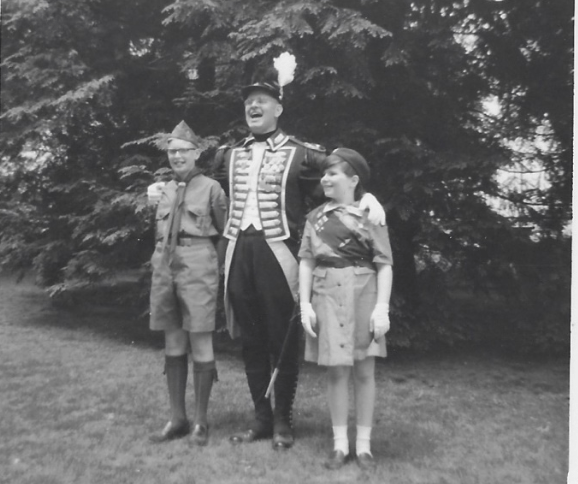
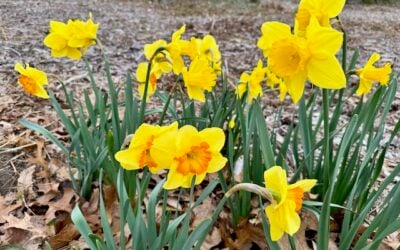
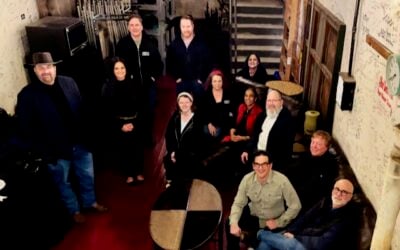
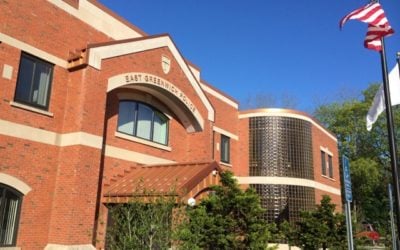
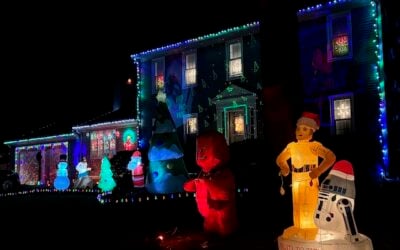
 Subscribe
Subscribe
Thanks for your memories, Laura!
Beautiful. Thank you.
Beautiful article. My memories go back further – back to the 30’s and 40’s. Trivia question. Who can identify the veteran from the Spanish war who marched in the EG parades for many years?
I saw it somewhere but not here. So that would be the late Clark Wells who died at 104 or 105, I forget exactly.
WOw -thanks for the quick response. Sorry that I never met Mr Wells. Guess I was too timid at that age to approach him. He sure left an everlasting memory. Do you remember where he lived in EG?
Clark Wells lived to the age of 106, passing away in New York at the home of relatives. The Kentish Guards gave him a big send off with a military funeral in Glenwood Cemetery East Greenwich. Clarke was a blacksmith who had a shop on Main Street in town at the site of the former Arnold’s Garage living near the site of his shop. He lived a charmed life, as his car was struck by a railroad train at the Rocky Hollow Rd. crossing and was dragged a considerable way down the tracks and lived to tell about it.. He was born in 1863 and died in 1969
Thanks!
Very nice article, Laura. Thank you. Keep up the good work and produce a few more for us to read, enjoy and learn.